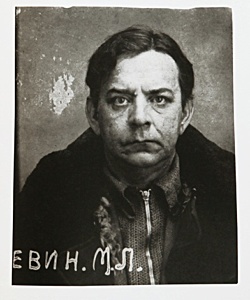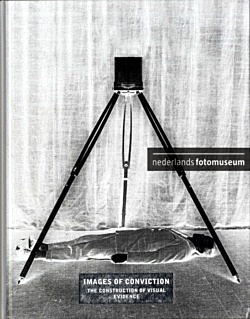CRIME SCENES; HONDERD JAAR FOTO ALS BEWIJS
 Het Nederlands Fotomuseum presenteert in het voorjaar van 2016 de tentoonstelling Crime Scenes | Honderd jaar foto als bewijs (t.m. 21 Aug. 2016)
Het Nederlands Fotomuseum presenteert in het voorjaar van 2016 de tentoonstelling Crime Scenes | Honderd jaar foto als bewijs (t.m. 21 Aug. 2016)
Kan een foto iets aantonen, bewijzen of onthullen? Al sinds de uitvinding van de fotografie wordt de fotocamera gezien als een vooral mechanisch instrument om de werkelijkheid af te beelden. Wat op een foto is te zien, is ooit zo geweest. Maar is wat op een foto staat daarom ook ‘waar’?
Foto’s kunnen ook een subjectief beeld van de werkelijkheid geven en ze kunnen zijn gemanipuleerd of in scène gezet. De fascinerende wijze waarop foto’s in de afgelopen 150 jaar in rechtszaken zijn gebruikt, en de discussies die er over fotografie werden gevoerd, brengt Crime Scenes voor het eerst in kaart.
Crime Scenes presenteert elf case studies uit de geschiedenis van de ‘foto als bewijsstuk’, met de nadruk op zaken van groot humanitair en/of volkenrechtelijk belang: van begin 1900 tot aan vandaag. Beginnend met de beroemde crime scene foto’s van de Franse politiefotograaf Alphonse Bertillion, via de luchtfoto’s van gebombardeerde steden tijdens de Eerste Wereldoorlog en de films van de concentratiekampen in de Neurenberger processen tegen de Nazi’s, eindigt de tentoonstelling met de problematiek rond de bewijsvoering van drone-aanslagen in Waziristan en de pogingen om aan te tonen dat de Bedouïnen in de Negev woestijn in vroeger tijden niet louter nomaden waren – met als inzet hun claim om er ook vandaag nog te mogen wonen. De tentoonstelling brengt een grote variatie aan historisch beeldmateriaal bijeen. De context van iedere casus wordt daarbij helder uiteengezet.
 Nieuwe boekuitgave:
Nieuwe boekuitgave:
Images of conviction.
The construction of visual evidence
Photography Catalogue of the Year, winner of the 2015 Paris Photo-Aperture Foundation Photobook Awards
Each of these eleven case studies spanning the period from the invention of ‘metric’ photography of crime scenes in the nineteenth century to the reconstruction of a drone attack in Pakistan in 2012, offers an ‘archaeological’ analysis of the historical and geopolitical context in which the images appeared, as well as their purpose, the way they were produced and the specific framework of their reception.
The nature and the gravity of the facts described mean that no fallacious comparison must be allowed to simplify or reduce the ambit of such images. Coming not long after the invention of the medium, everyday use of photographs in the courtroom made the image’s power as truth an essential tool of conviction in the service of justice. This power as truth has been ardently debated, sometimes legitimately contested and often contradicted.
How does the image take shape in truth-seeking scientific and historical discourse?
Tekst: Jennifer L. Mnookin, Anthony Petiteau, Tomasz Kizny, Thomas Keenan, and Eric Stover
Aantal pagina’s: 240
Foto’s: 280 zwart wit foto’s
Formaat: 22 x 28.5 cm (staand)
Hardcover, € 44,95
Taal: Engels
Uitgever: Éditions Xavier Barral
ISBN: 9782365110839
Nederlands Fotomuseum
Gebouw Las Palmas
Wilhelminakade 332
3072 AR Rotterdam
# Meer info website Nederlands Fotomuseum
fleursdumal.nl magazine
More in: - Book News, Art & Literature News, CRIME & PUNISHMENT, Galerie des Morts, Photography

